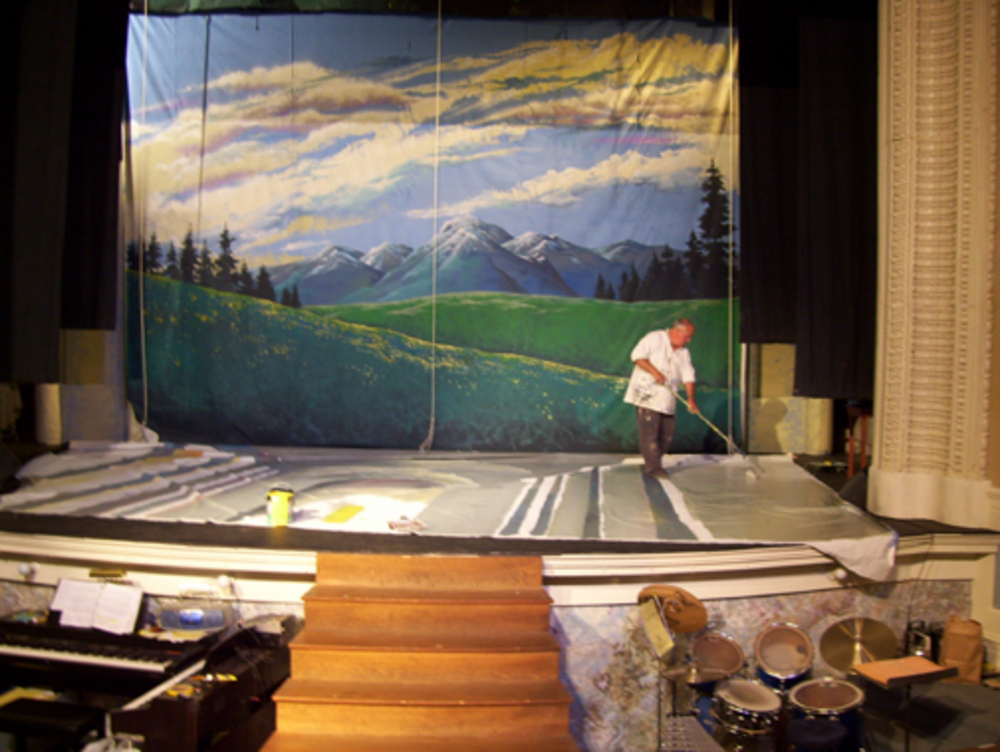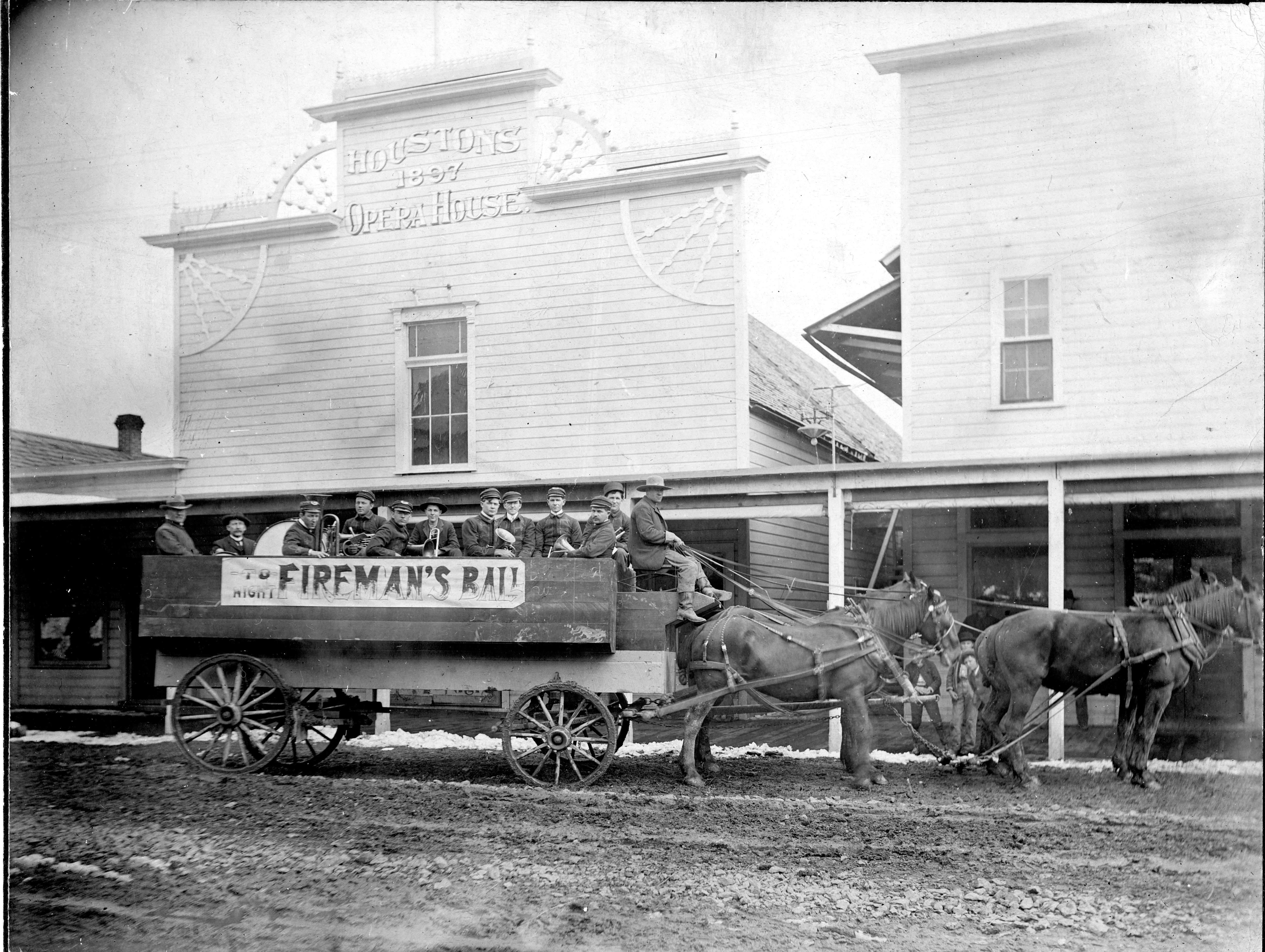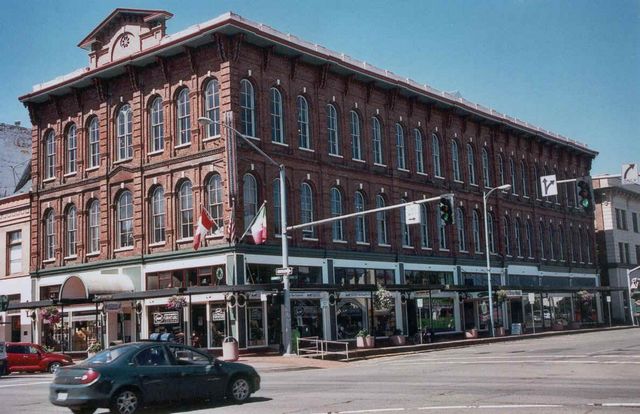The Elgin Opera House, pride of the town of Elgin, Oregon (pop. 1,685), in the Blue Mountains of Union County, is once again as beautiful and regal as on its dedication on, July 4, 1912. The Opera House/City Hall was built to house administrative offices and promote the growth of culture in the area. From the hand-pressed tin ceiling, and box seats with plush draperies framing the stage, to tall wooden columns rising from the theater floor, all lit by chandeliers, the interior spoke of elegance and comfort. With a 35-foot fly-loft capable of hanging two dozen back drops, a slanted floor providing great eye-lines, and superb acoustics, the auditorium resembled a small but first-class European opera house. Municipal offices were constructed on the main floor, city council chambers upstairs, and a tiny jail in the basement.
Architect John L. Slater of La Grande designed the two-story, colonial revival brick and stone structure, which was completed at a cost of $15,000. Local leaders counted on weekend performances to bring in enough revenue to cover the cost of construction, and in 1912 they had reason to be optimistic about the theater's success; the O.W.R. & N. Railroad had recently connected to La Grande, Joseph, and Pendleton, and town boosters believed that Elgin would benefit and become a thriving community. At its initial dedication, audiences filled the theater to listen to a reading of the Declaration of Independence, an oration of soon-to-be-Governor Walter Pierce, and the singing of a local choir. There were musical and literary shows inside while outside, revelers enjoyed games, sports, races, and a balloon ascension. Early entertainment included traveling vaudeville and minstrel shows, local drama groups and an occasional silent movie—all for a dime. The Opera House became the center of civic activities, including baby beauty contests, carnivals, high school graduation ceremonies, and political rallies. During World War II, the city held rallies, bond drives, and patriotic parades around the building.
With the ascent of radio and television in the 1950s, the number of paying customers dropped, and several municipal offices—as well as the library—moved into the refitted building. Because of lack of maintenance, however, the building fell into disrepair; the library moved out in 1979, and even the weekend movie theater closed.
In 1985, Russell Ford, founder of the Elgin Arts Council, proposed to the city that he would restore the interior of the building to its former glory if the city installed new heating and lighting. His offer became the rallying point for a complete restoration. The Wallowa Valley Arts Council pitched in by installing dressing rooms, a shower, and new restrooms. In 1989, Ford retired from the project and transferred the lease. Using grant money, the new leasors completed the renovation, restoring the original orchestra pit, the rococo-design, tin and plaster relief on the ceilings, and the mythological characters that lined the walls.
In 1997, the city celebrated the 85th anniversary of the building (and Oregon's oldest operating movie theater). Today, first-run films and live performances Chautauqua programs, dramatic readings, musicals, bluegrass and country singers have breathed new life in the old structure. The Elgin Opera House was added to the National Register of Historic Places in 1980.
-
![]()
Elgin Opera House.
Courtesy Terry Hale, Elgin Opera House
-
Elgin Opera House.
Courtesy Terry Hale, Elgin Opera House
-
![]()
Elgin Opera House.
Courtesy Terry Hale, Elgin Opera House





